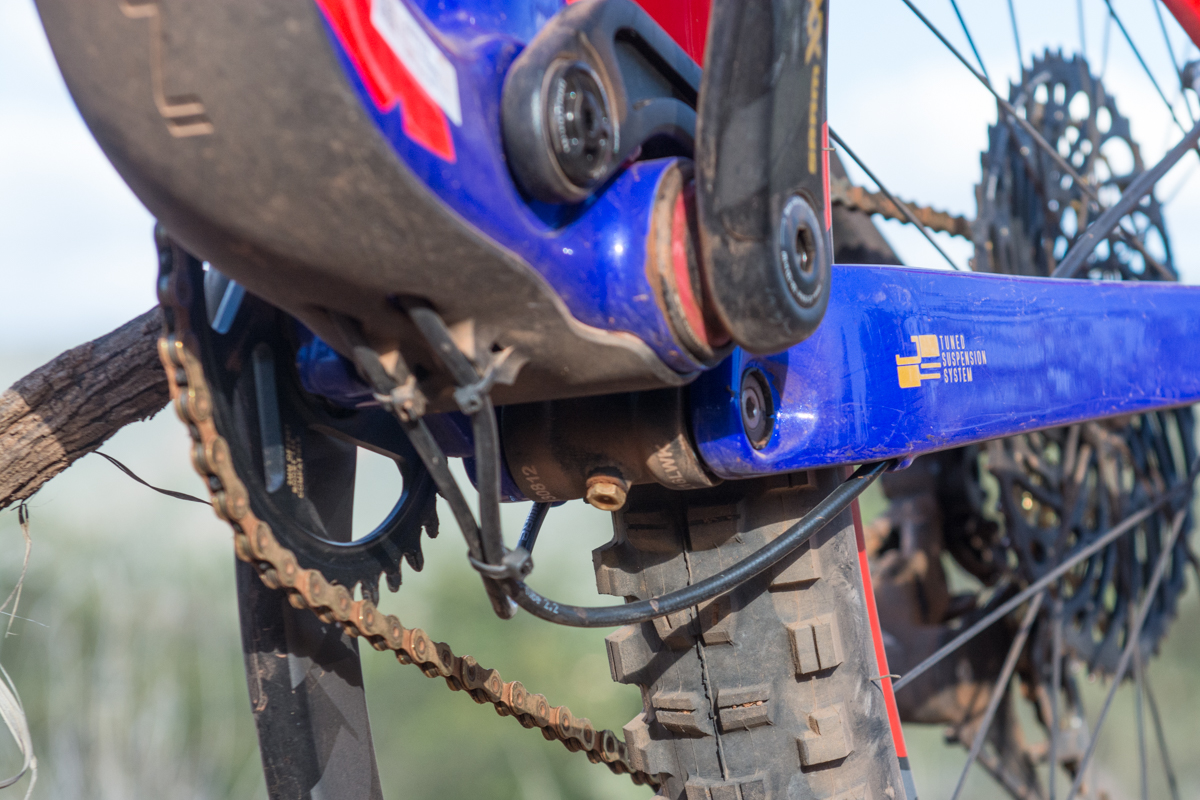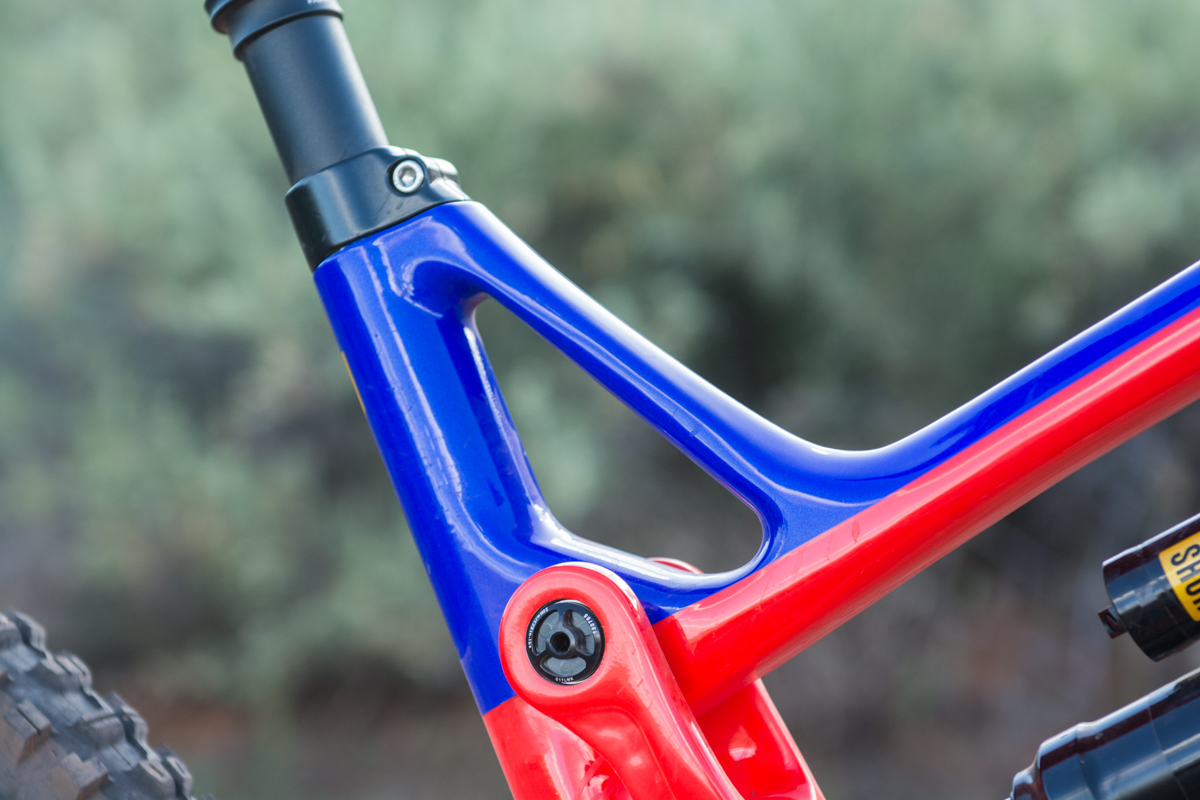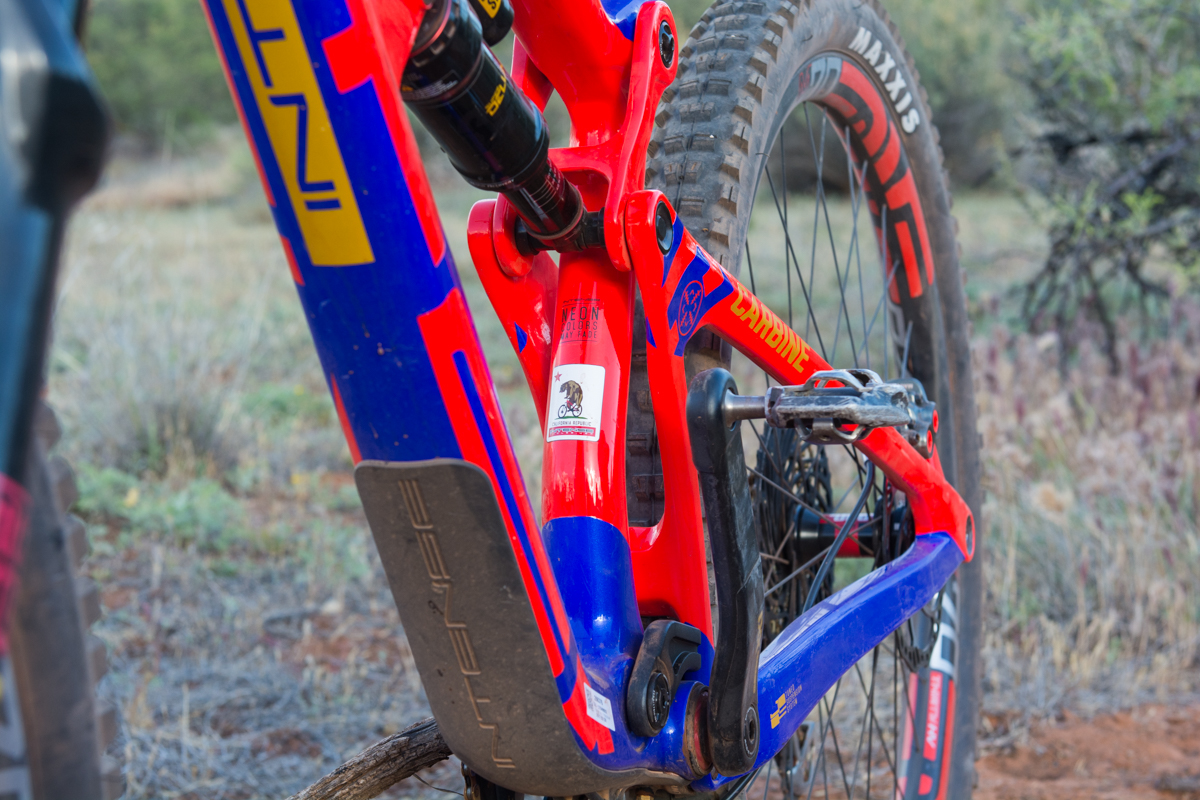First Ride Review: Intense Carbine
Originally posted on June 27, 2017 at 10:42 amBy Zach White
Monster truck. If Dirt Rag would allow for a two-word review, that’d be the summary of Intense’s new 29-inch, 160 mm/155 mm front/rear travel Carbine. From the flashy, neon paint job to the ability to roll right over anything it was pointed at in Sedona, Arizona, last month for the Magura/Intense press camp, its 29×2.4-inch tires and accompanying abundance of travel made for such a first impression. By comparison of the previous generation’s Carbine that had a much more progressive spring rate in its 140 mm of travel, and accompanying features like front derailleur compatibility to span a broader spectrum of trail use, this 2018 version almost has more in common with the M16 downhill rig. A more linear JS (Jeff Steber) Tuned linkage spring rate with short, counter-rotating links, 15 mm more rear wheel travel, the omission of a front derailleur option and much more slack 65.5-degree head tube angle pointing the new 160mm RockShox Lyrik toward the trail all add up to what’s really an entirely different beast.
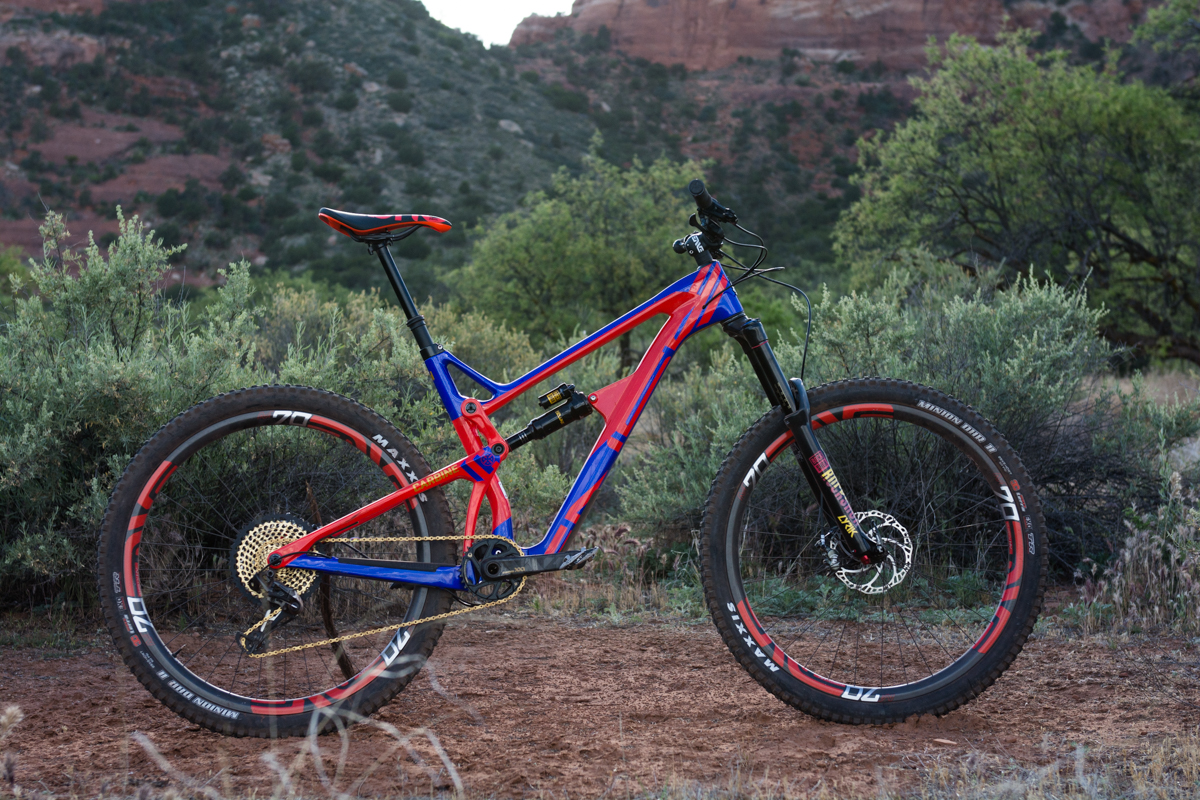

Like many of the carbon Intense frames, the Carbine will be available in a standard and SL version. At $3,400 for the frame, the SL is claimed to not only be lighter than the $3,100 standard carbon frame, but also stronger and stiffer. Both versions receive new internal guides that should keep the housing from wearing out contact points–an admitted issue on some of Intense’s previous models. Standover height is actually improved by comparison of last year’s Carbine, even with the added suspension, and tire clearance is compatible with 2.5-inch knobbies. Frame sizing is S to XL, and all will come stock with 780mm bars, 40mm stems, and 150 mm dropper posts. Available in an array of SRAM-based build kits, top tier Factory Build will run $10,400, down to the $4,000 Foundation Build version.
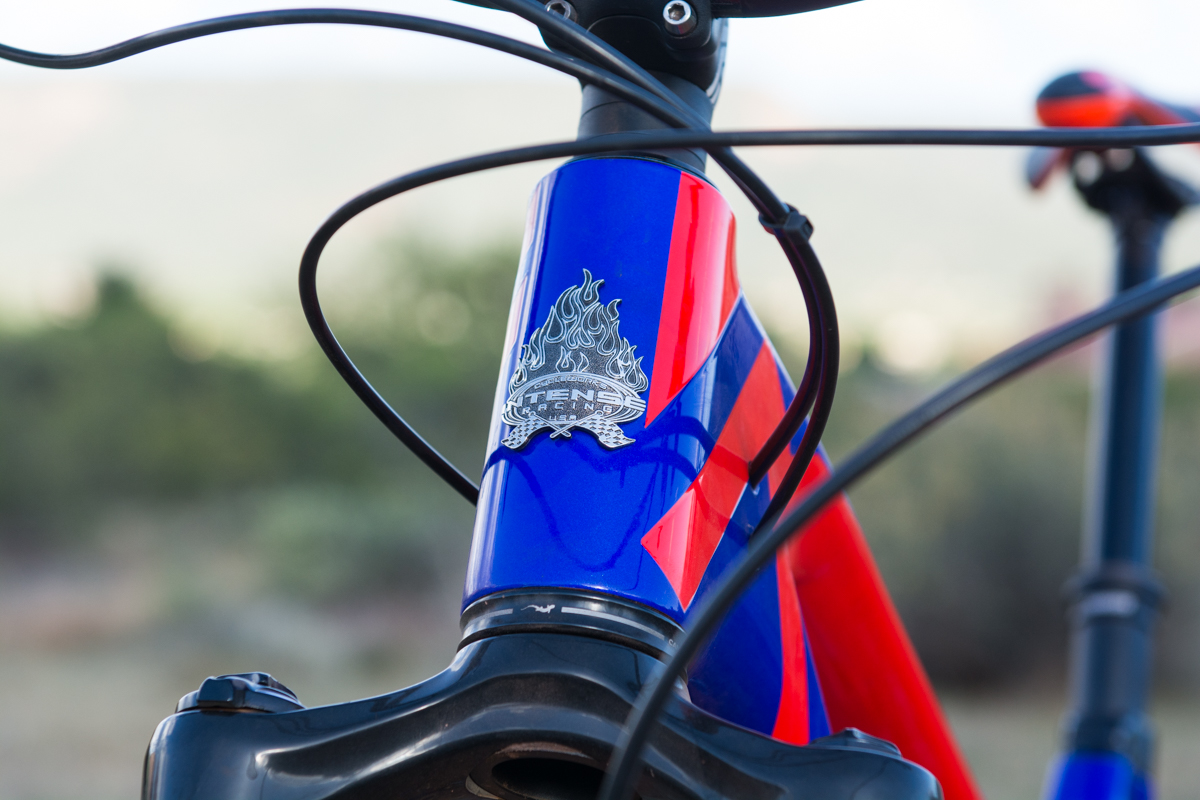
The Ride
Spending a single day on the new Carbine on the generally slow and techy trails of Sedona didn’t provide the broadest spectrum of conditions to get a fair and balanced impression of Intense’s latest. That said, it was obvious that the long-travel chassis greatly preferred higher speeds and straighter sections of trail than slowly picking its way through tight and twisty rock gardens. By the claimed 49.3-inch wheelbase on the borrowed XL alone, it had a tendency to complain a bit when rider weight was being shifted back and forth while trying to climb up through rock gardens, or even thread through challenging flat sections and tight low-speed descents. Specific to climbing while seated, the Carbine’s more regressive spring rate had a tendency to squat down into the travel a bit on steep sections, sneaking rider weight back a bit more than desired and slackening the already relaxed 65.5-degree head tube angle a touch more. On less challenging climbs and flat sections of trail, the JS Enduro Tune felt nice and efficient, and only noticeably bobbed a bit while pedaling out-of-saddle when the shock was open or in mid-damping mode.

All of which is to say that the Carbine would be a much better choice for less technical routes to the top of fast, rough and chunky descents. The few fast spots found in Sedona really perked up the Carbine, and piqued interest of how the big brawler of a bike would handle in environments like Downieville or even Colorado. While there wasn’t a chance to weigh the Carbine, weights were claimed to be just under 30 lbs, and ride impressions felt like that number was accurate.

Overall, the new Carbine is an unabashed beast of a bike that’ll reduce big, chunky trail hits and drops into mere visual blips. It’s more focused on one end of the trail spectrum than last year’s version, which will narrow down the target audience to those who want such a big bike that’ll roll over just about anything. In other words, it’s a monster truck.
